Chairman of the Board
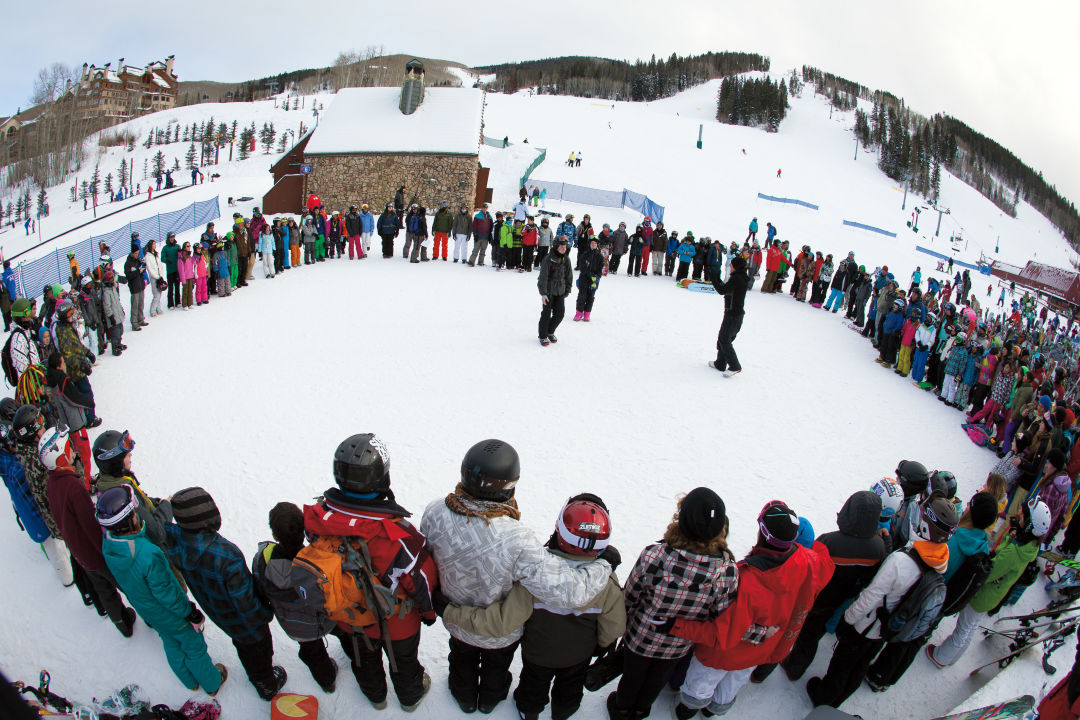
Arn Menconi asks SAS Students to share their definitions of the word "discipline" in the circle of love.
Image: Charles Engelbert
Want to glimpse the future of this nation’s snow-sports industry? Arrive before 9 a.m. in Beaver Creek Village on a brilliant, just-above-zero Saturday morning. Ride the Buckaroo Express gondola to the top of the bunny hill, click into a pair of skis or strap on a snowboard, then carefully weave around legions of Mogul Mice snaking across the resort ski school’s novice terrain, yelling “pizza pie!” and “french fries!” as they practice snowplows and parallel turns.
And ignore them. Because at the bottom of the hill, just outside the gates to Lift 2, the double chair that services the bunny hill, you’ll find a middle-aged man with a slight build and pointed nose lecturing a motley gaggle of teenage and preteen snowboarders, circled shoulder-to-shoulder with their boards planted in the snow and pointing inward, each forming the petal of a daisy. Holding court is Arn Menconi, the founder and director of Avon-based nonprofit SOS Outreach, and these are sixteen of his charges: at-risk kids from local elementary, middle, and high schools enrolled in SOS University, a four-year outdoors leadership class, and their young-adult mentors.
Unlike the squeaky white Mogul Mice dressed in the latest Spyder outerwear and POCito helmets and Oakley goggles and battery-powered heated gloves, most of the SOS kids are wearing mismatched jackets and bibs and boots, with snowboards two or more seasons out of date. Most attend the valley’s Hispanic-majority public schools (which have deemed them at-risk due to low grades, poor attendance, or bad behavior) and live in trailer parks or crowded low-rent apartments in Avon, Edwards, or Eagle. These are the sons and daughters of Avon’s invisibles, an underclass of locals who speak little if any English, having emigrated from dusty snow-free villages and cities in Latin America to clean rooms at resort hotels or do other blue-collar jobs.
A $389 Epic Local teen pass, not to mention a $325 Ultimate Four group lesson, is as unattainable for these kids as a BMW convertible with a ribbon wrapped around its hood on a sixteenth birthday. For some families, even the $175 SOS University annual tuition—which includes a season pass to Vail and Beaver Creek Mountains, five days of snowboarding instruction, and a five-day summertime wilderness trip—is a stretch. But the kids are all here, back for the second of five ride days. Despite the bitter cold. Despite hardships only they could articulate, but probably won’t.
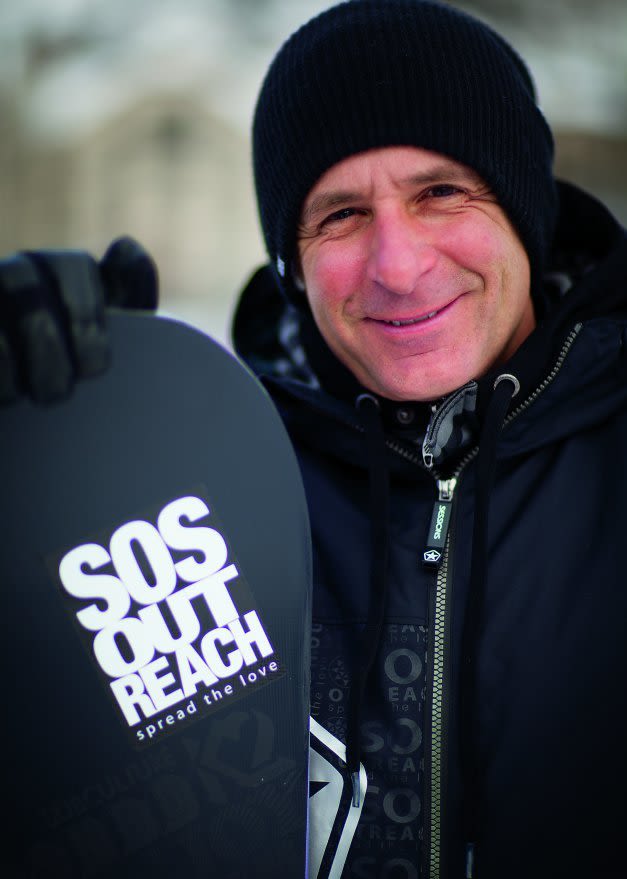
Image: Charles Engelbert
To Menconi, this is a victory.
The self-described social justice “provocateur” who raised hell and hackles as a two-term Democratic county commissioner in the early 2000s and only learned to snowboard in his 30s (and that was 20 years ago) is dressed in an SOS-branded Sessions jacket (a corporate sponsor), black snow pants, black helmet, and black goggles; even his board, the latest Subculture model by K2 (yet another SOS corporate sponsor), is black. Menconi’s once shoulder-length (and now buzzed) black hair is trending gray to white, so whenever he’s not wearing a snowboard helmet, even indoors, he wears a black watch cap. He exudes the cool of an aging underground rock star—think Art Alexakis of Everclear—to such an extent that he even makes screaming the cheesemo SOS motto, “Spread the Love!” sound cool. It helps that he’s wicked smart. Making eye contact with each one of the kids, the founder and CEO launches into a review of SOS’s five core values, a word that sets the theme for each ride day: courage, discipline, integrity, wisdom, compassion.
“Cour, which is where ‘courage’ comes from, is from the French word for ‘heart.’ Because you’ve gotta have heart to have courage,” he says. “Discipline comes from a Latin word, disciple, which means to follow what you believe in. So discipline, I think, means following your heart.”
He’s warming up to his audience now, sounding less like a professor and more like a preacher, yelling out each word, sucking in air so cold it hurts, exhaling great clouds of steam. Expanding on the third value, integrity, he asks, “Who’s done their service learning project already?”
Half the kids raise a hand; in exchange for discounted season passes, SOS students perform four days of community-service projects like maintaining trails, delivering food baskets, or walking dogs at the local animal shelter. That leads into Menconi’s brief disquisitions on wisdom and compassion, after which he asks the group to pair off, instructing them all to think and talk about discipline as they ride the chair up the mountain. But just before the circle breaks, he can’t resist adding a footnote, a parable from his own experience about the day’s key value.
“Discipline is the hardest of the five words for me,” he says. “When I don’t want to do something, I really don’t want to do something. But I believe in what I’m doing with my work, and I have to keep improving, and I have to keep on trying harder—I have to keep opening up to more things.
“You guys help me understand the meaning of discipline better than I can teach you what the meaning of discipline is. What I’ve learned in my fifty-three years is that it always takes longer than I’d thought to accomplish my goals, but it’s well worth waiting. I know that if I have the discipline or the patience to keep working at what I believe in, eventually it will happen, and all the time it took will never matter. Thank you for letting me share that, and I guess now we’re going up the chairlift.”
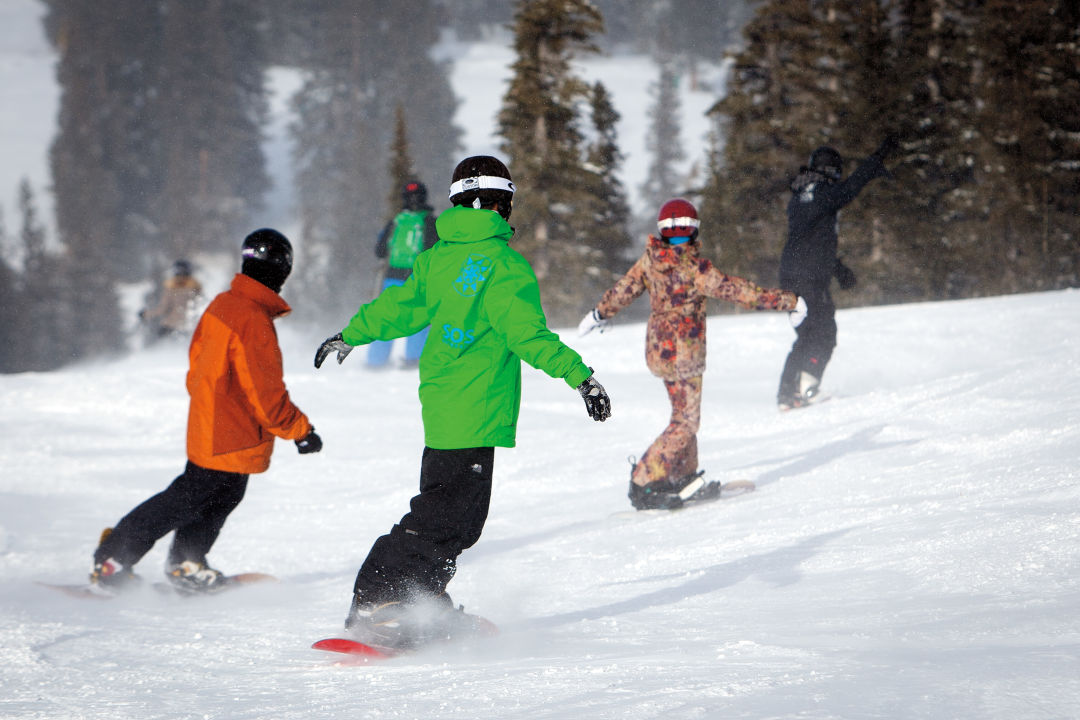
I first met Arn Menconi a week earlier, on a Thursday afternoon at the Avon headquarters of SOS, which occupies a warren of cubicles on the second floor of a nondescript office building off US Highway 6, just across the street from Beaver Creek Resort’s free skier parking lot. I arrived before him, but his team was in the throes of planning for the coming weekend’s ride days and producing the nonprofit’s annual report, poring over financials, metrics measuring student participation (last ski season, 3,769 kids across the nation were enrolled in SOS’s snow-sports programs, 566 in Eagle County alone), and demographics (56 percent of those local kids identified themselves as Hispanic, with a similar percentage reporting household incomes at or below 50 percent of the county median, which is $71,337).
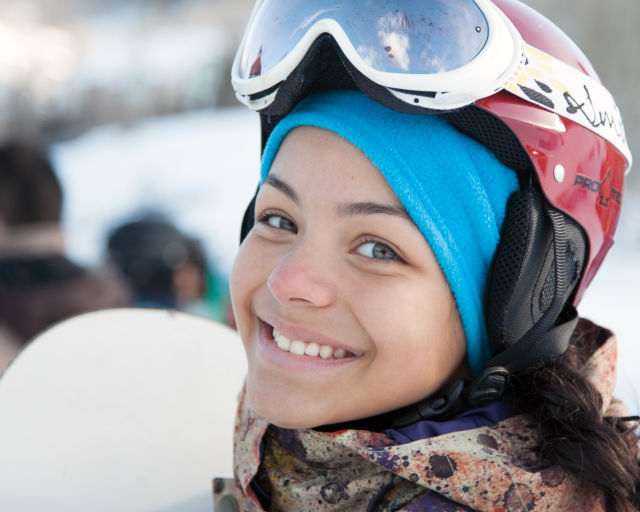
The vibe reminded me of a scene from The War Room, the documentary about Bill Clinton’s 1992 campaign, with its bustle of idealistic, technologically savvy overachievers fresh out of college. Menconi’s full-time staff of eight is augmented by a half-dozen part-timers, eleven members of AmeriCorps VISTA (the poverty-fighting arm of the federal government’s community-service program), and 750 young-adult volunteers scattered among satellite SOS offices in Eagle, Denver, Durango, Frisco, Steamboat Springs, Seattle, and Portland.
Fifteen minutes late, Menconi burst through the glass door, dressed in his monochromatic off-mountain uniform: black sneakers, black dungarees, black T-shirt, black hoodie, black Woody Allen eyeglasses, black knit cap, and a black canvas bike-messenger bag slung over a shoulder. Without an apology, he folded himself into an office chair (black) in the reception area, and launched into the story of SOS, which begins with his.
Arn Menconi grew up on the west side of Chicago and went to high school in New Lenox, a lily-white (96.2 percent Caucasian), upper-middle-class (median family income: $97,752) suburb of southwest Chicago. Lincoln-Way Community High School happened to have the largest high school ski club in Illinois, which may not be saying much, given that the closest ski area, Wilmot Mountain in Kenosha, Wisconsin, boasted 53 acres of terrain and a vertical drop of 230 feet. But Menconi was voted trip chairman, and in 1976, when he was 16, he organized a weeklong spring-break excursion to Vail. It was the first time he had ever traveled outside the purview of his parents, and the experience was transformational. Imagine, he says, twenty-one teenagers practically unsupervised on a twenty-one-hour train ride to Colorado when the drinking age was 18 and the Coors you could buy with your fake ID was 3.2 percent alcohol. But he didn’t drink (raised Catholic, he defied his parents by converting to a born-again Christian), so while his peers partied, Menconi skied.
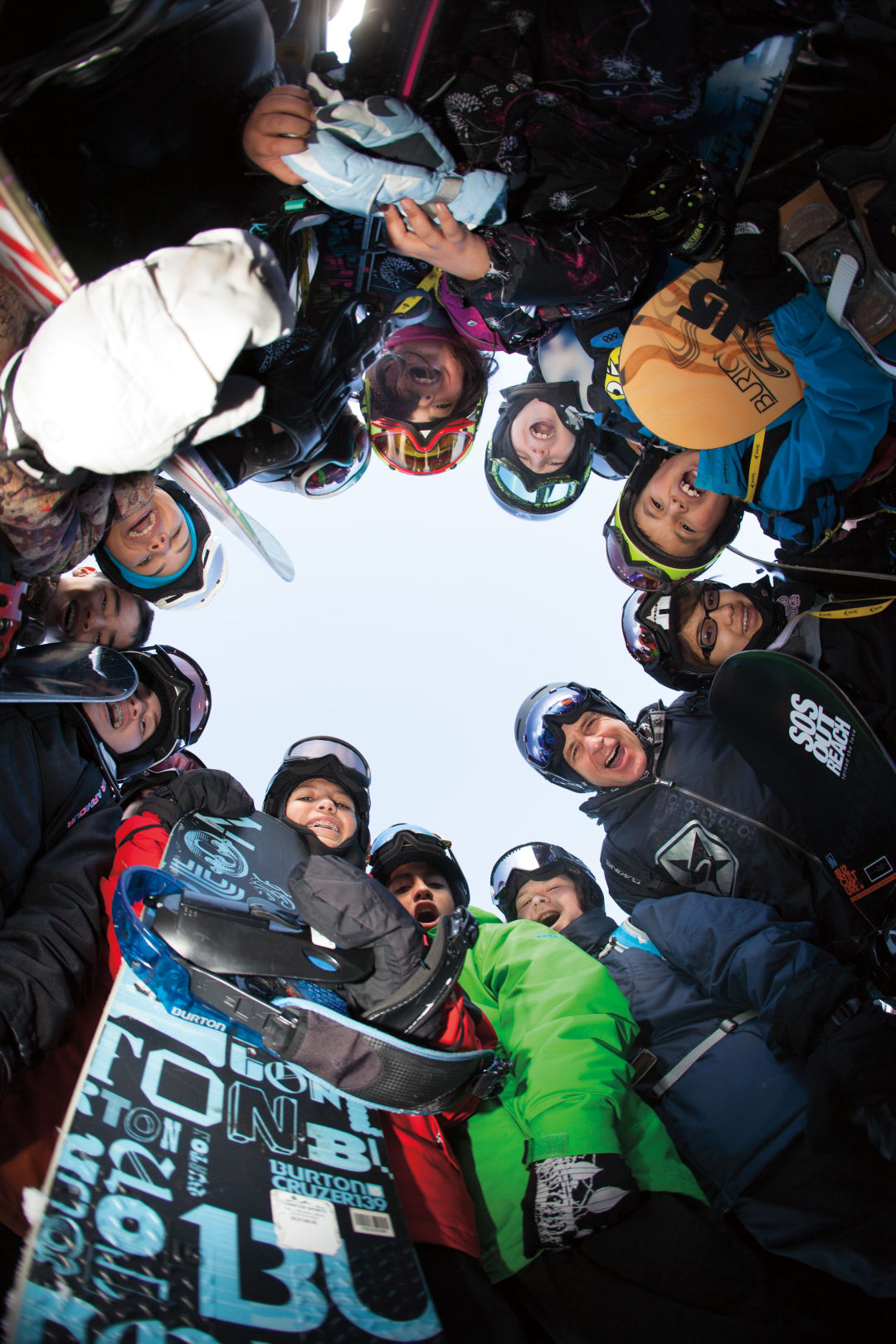
“The memories I have of that trip are getting up and being on the first chair and skiing all day long until the lifts shut down and not stopping for lunch—and doing that every day for a week straight,” he recalls. “And the people in jean jackets with their red bandannas and ‘Smoke on the Water’ being played out of the lift shacks ... after being in the Midwest, Vail was Mecca.”
He vowed to return to Colorado for good after college, but after earning a communications degree from DePaul University, Menconi squandered his twenties at or near sea level. After interning for several Chicago-area nonprofits—including Amnesty International, Goodwill Industries, and the World Without War Council—he ended up in Florida at a government-owned asset management company, selling bank-owned homes, just about as far away from Vail as he could have imagined. But in 1991, the company acquired a collection of foreclosed vacation homes in Beaver Creek, and Menconi moved to Avon to oversee the sale.
He never left.
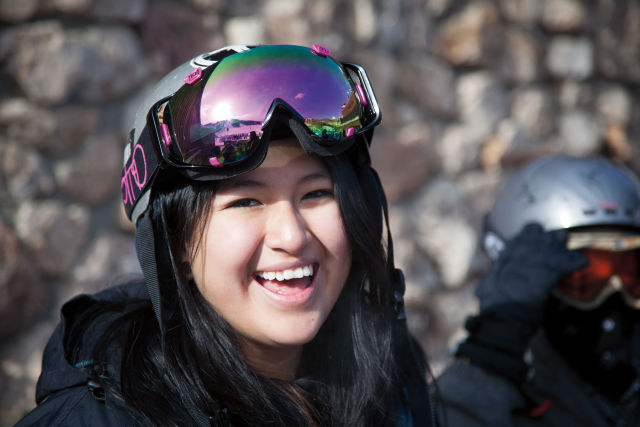
“I was 33, single, living in a seven-bedroom home; it was a pretty good foot in the door,” he recalls. Things had changed since he had lasted visited in 1976; for one, there was a war going on, a skirmish between skiers and snowboarders. The Beaver Creek Homeowners Association was petitioning the resort to ban snowboards from the mountain.
“They didn’t like snowboarders,” he says. “They didn’t like the language, the way they dressed.” Which only piqued the provocateur in Menconi.
“I remember sitting on the chairlift and looking down and seeing all the snowboarders and thinking, ‘Omigod, this is another art movement about to explode!’ The fashion, the way they were talking, the graphics on the boards: everything about it was counterculture. And I knew this was an opportunity to grab onto.”
In addition to brokering the vacation homes, he took a job at the rental counter at Christy Sports and asked one of his coworkers to teach him how to snowboard. His first five days riding Golden Peak—falling, mostly—were hell. But then on his sixth day at Beaver Creek, everything clicked. Linking turns for the first time, he had an epiphany.
“I will never forget my sixth day,” he says. “I was on Gold Dust. I went through the Dark Side and the Force and whatever lies beyond. I burning-bushed.”
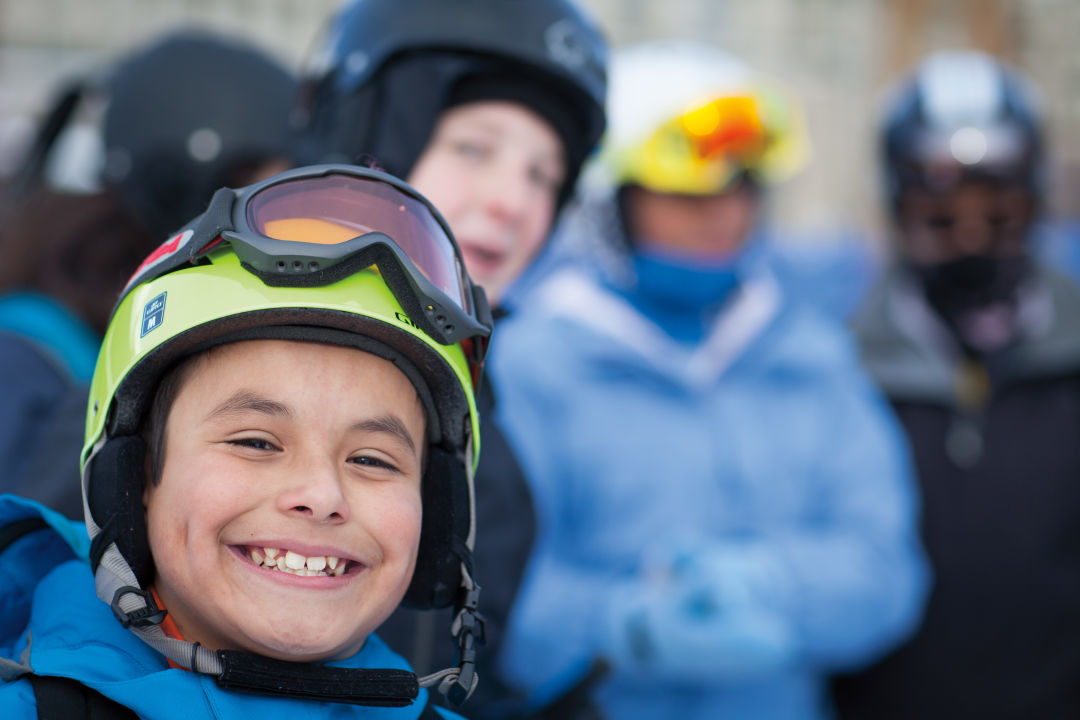
The following season, he talked his way into a job as a snowboarding instructor at Vail’s ski school. With the Beaver Creek Homeowners Association still clamoring for a snowboarding ban at the resort, Menconi began talking with his boss, Ray Sforzo, about how they might soften the sport’s harsh image. Together, they hatched the idea of the Snowboard Outreach Society, a nonprofit that would use snowboard-oriented events, including half-pipe competitions and hip-hop parties, to raise money for charity. Menconi was president, and Sforzo was vice president.
By April 1995, Menconi’s charity hip-hop parties were netting $6,000 a year, money that was funneled into multiple sclerosis research, the Salvation Army, a Denver program for at-risk youth, and a college fund for the son of a Vail ski patroller who had died in an avalanche. The SOS/Vail Associates half-pipe competition that spring attracted sixty-five riders, including future Olympian Todd Richards, raising $1,700 for a VA-sponsored charity that brought burn victims and cancer ward patients from Denver’s Children’s Hospital to Vail to ski and snowboard; Menconi happened to be teaching Sigourney Weaver’s husband to ride at the time, so the actress headlined the awards ceremony.
That led to a front-page article in the Living section of the Denver Post in early 1996 that opened with this sentence: “Snowboarders, of all people, have become the feel-good story of this young year,” followed by a typically uncensored bit of emotion from Menconi: “Truth is, I was upset by a few insipid journalists and the short-sighted bigotry of certain skiers, and a lightbulb went on to create a nonprofit organization that was not about snowboarding but about raising the awareness of what one can do for others.”
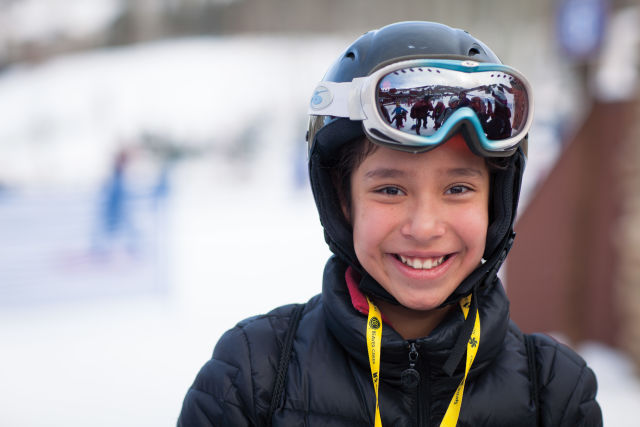
Sforzo puts it this way: “SOS came at the right time because we needed a mission. We were rebels without a cause, and in the name of charity, SOS facilitated an opportunity to do something for others. We never had that before.”
A schoolteacher from an impoverished neighborhood in Denver read the story and asked Menconi if he could teach her at-risk kids to do something positive with their lives, namely, learn how to snowboard. Menconi procured Vail lift passes, rental equipment, and ski school instructors willing to donate their time. On another Saturday, incarcerated teens came to Vail to learn to ride with SOS. Later that year, at the urging of developer Robert Hernreich, a powerful Clinton ally from Little Rock who wintered and snowboarded in Vail, Menconi incorporated SOS as a 501(c)3, devoted not to hip-hop parties and half-pipe competitions but to youth development. “Bobby said, ‘Arnie, you’ve got to narrow your focus; you can’t help everybody,’” Menconi explains. “So I went with at-risk kids. It was a natural fit.”
Menconi returned to school and earned an MBA from the University of Denver; his thesis was the business plan that would guide the evolution of SOS. He recruited Ivy League social scientists to SOS’s board, and they helped develop the organization’s curriculum: SOS would teach at-risk kids to ride with five intense days of professional instruction, ideally leading to a sixth-day epiphany, like Menconi’s, found on their own. In addition to instruction, each ride day would revolve around a key core value and begin and end with a “circle of love,” a time of group sharing with each child reciting his or own definition of the word, as well as affirmations from their peers. If all this sounds touchy-feely/woo-woo, says Menconi, well, it was meant to be.
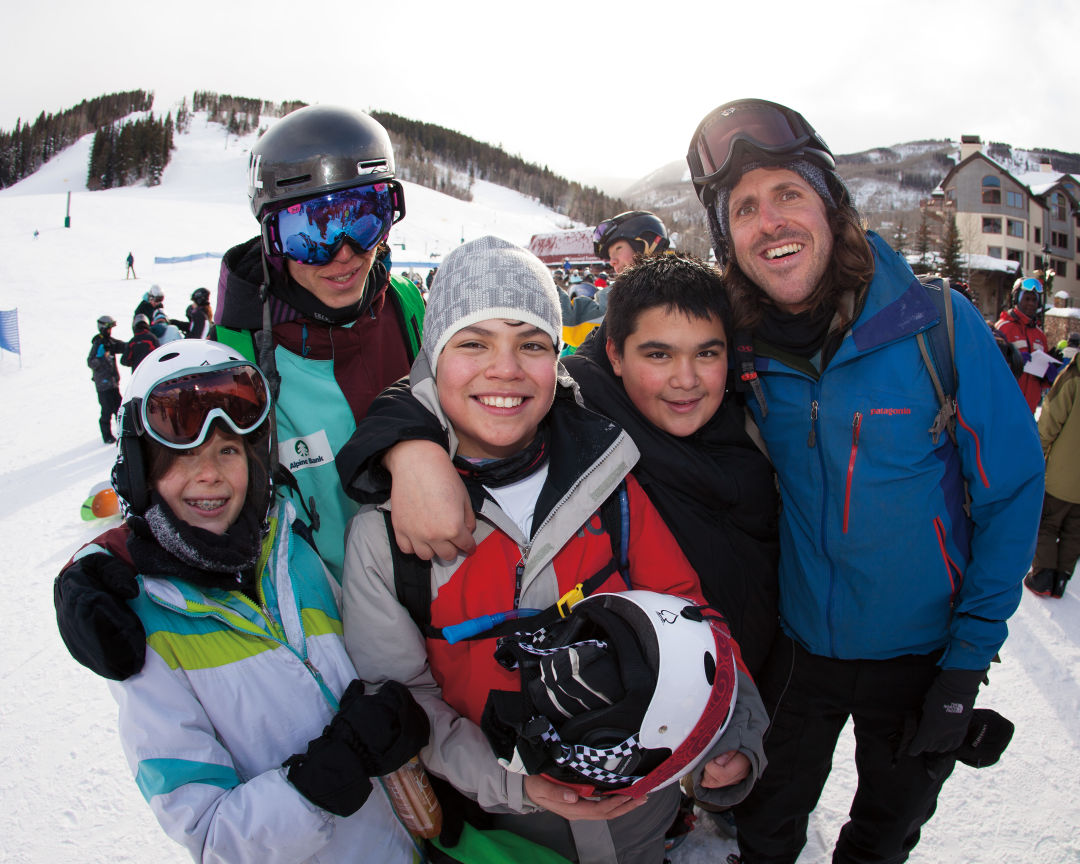
“It’s OK to be saccharine,” he explains. “The kids we work with aren’t hearing a lot of positive phrases in their lives. The six core values and five ride days have a way of teaching kids the simplest stories and philosophy. It’s supposed to be weird for [young-adult mentors] in their twenties, who think they’re so cool, to say to the kids, ‘Let’s get into a circle of love.’”
But the ride days would be only the beginning.
Once the kids were hooked on snowboarding, SOS would use the sport—in the form of drastically reduced season lift passes—as a carrot to lure them back for four subsequent winters with a leadership development program, SOS University, which paired students with sherpas, young-adult mentors from similar backgrounds who would bond with the kids on and off the mountain, combining five ride days with nearly as many off-mountain days performing community service. SOS University graduates then would return every season throughout high school as junior sherpas, assisting the older mentors. After college, many of these kids would be hired as sherpas, mentors who serve as role models and leaders for kids just like themselves, earning $10 an hour—their first real jobs as adults. In this way, the nonprofit would be able to shape the lives of underprivileged kids not just for a single season, but for an entire decade, throughout the critical period of adolescence. And that, really, is the magic of SOS, what sets Menconi’s nonprofit apart from so many other outdoors-oriented charities.
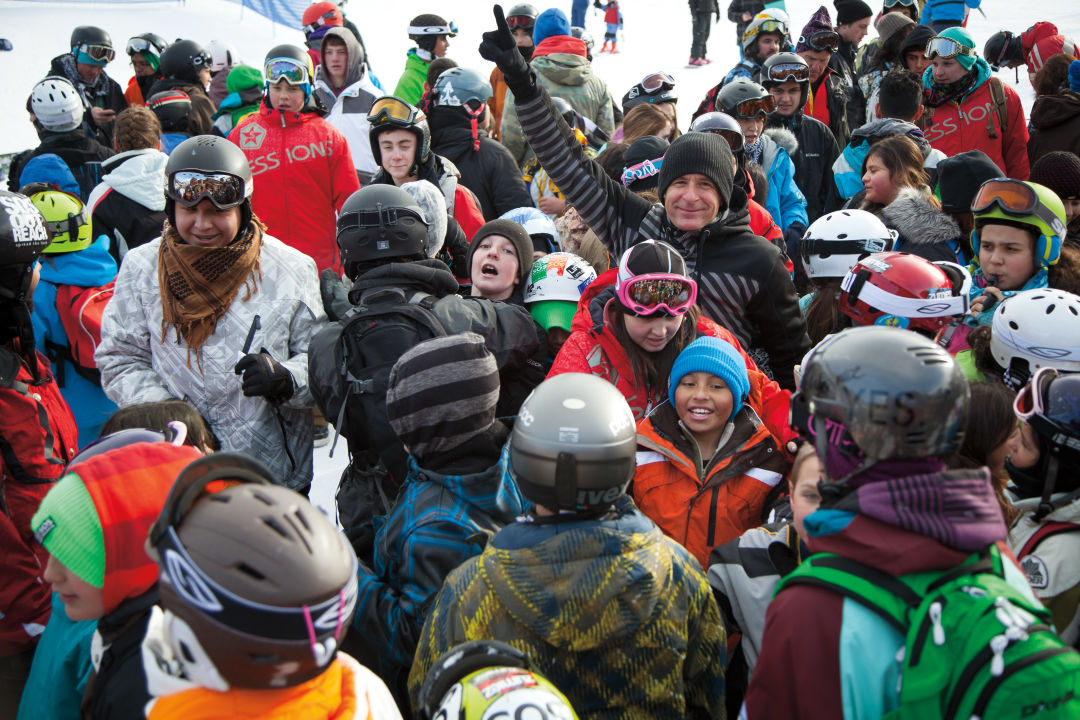
“What makes SOS so unique is this longitudinal, long-term commitment to kids,” says Gil Noam, a Swiss-born child psychologist at Harvard University Medical School who studies the impact of after-school youth development programs and also serves as a director on SOS’s board. “This whole sherpa idea is really unique. One summer or winter in the outdoors, those are very powerful experiences and have transformative potential. But connecting with kids long-term, providing them with skills and safety and care, that helps them think through school issues and career issues.”
As the mission of SOS has evolved, its reach has expanded, from dozens of kids a season in the 1990s to hundreds and now thousands of children in ten states across the nation. And so has its programming. In addition to the Learn to Ride program, SOS now teaches skiing. And after merging with Meet the Wilderness, a thirty-four-year Eagle County nonprofit that offered summer outdoors leadership training to local kids, SOS University is now in session year-round, offering summertime courses in rock climbing, mountain biking, and wilderness trips.
All of this, of course, gets expensive. This time of year, when Menconi isn’t on the mountain teaching snowboarding, he’s out fundraising, making the rounds at snow-sports and outdoor-recreation industry trade shows and working the phones. In 2012, SOS raised just under $1 million in cash and more than twice as much in in-kind donations (including equipment, lift passes, and professional ski instruction). Vail Resorts is and always has been by far the organization’s single-largest benefactor, last year donating 752 instructor days from its ski schools, 2,323 day passes, 800 ten-day passes, and 662 season passes, at a total value of $1.2 million.
“We asked Arn to go after kids who are in need locally and on the Front Range and give them access to skiing and snowboarding. That’s how the conversation started, but nobody ever envisioned that he would reach out to hundreds of communities,” says Nicky DeFord, who manages Vail Resorts Echo, the company’s corporate sustainability and giving program. “I’ve ridden with SOS kids, and it’s such an incredible experience. This is so much greater than taking laps on a chair.”
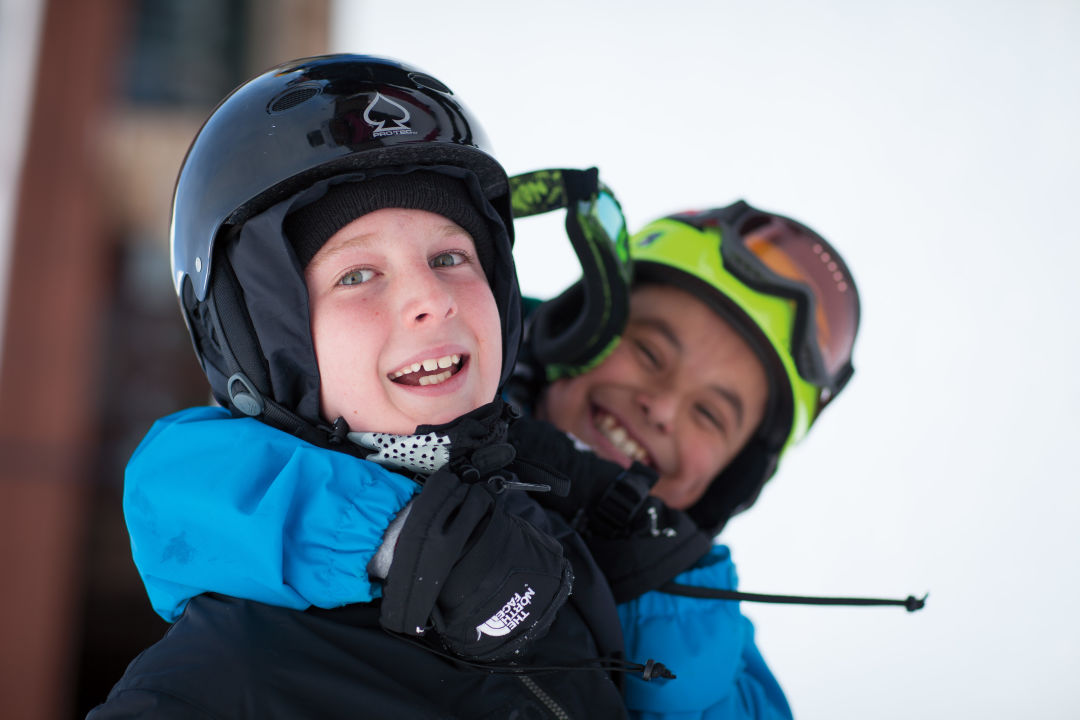
After Vail Resorts, the largest ski-resort contributor, the largest gear manufacturer on the nonprofit’s donor roster is Seattle-based K2 Sports, which, in addition to giving $25,000 in cash and tens of thousands of dollars in snowboarding equipment last year, also houses SOS’s Washington field office at its corporate headquarters, rent-free. For K2 Sports CEO Anthony De Rocco, the time, money, and product his company gives to SOS is as much about altruism as it is about the corporate bottom line. But considering that last year, the number of snowboarders declined for the first time in the history of the sport—from a peak of 28.6 percent of resort visits in 2009–10 to 26.7 percent in 2011–2012—SOS’s ability to reach a ballooning nonwhite population that culturally has never been invested in snowboarding or snow sports could have practical benefits.
“We’ve got to figure out how to keep the sport alive and growing,” says De Rocco, who also serves on SOS’s board of directors. “If you look at the demographic changes that are happening in the US, it’s important that we broaden the demographic spectrum of people who ski and snowboard. The number of people SOS has put on snow speaks for itself, and their conversion rate is phenomenal. ... If we can get the organization in more places, it’s going to be a benefit for everybody in the long run.
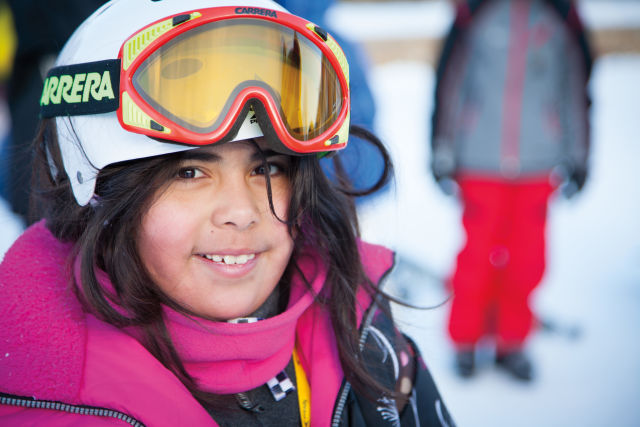
What De Rocco means by “conversion rate” is the percentage of first-time skiers and snowboarders who return to ski or snowboard five or more days a season after an introductory lesson. Industrywide, the conversion rate is 16 percent; for SOS, which fielded 15,000 skier days alone last season, it’s closer to 24 percent. What’s more important, while resort-owned ski schools tend to cater to the Caucasian clientele that’s historically been a mainstay—the population that’s presently in decline—SOS reaches out to the predominantly Hispanic population that’s reshaping politics, power, and commerce nationwide. Menconi ghostwrote an article to that effect in the current issue of Transworld Business, a widely read industry trade journal.
“Post-election analysis showed that President Obama was re-elected by reaching out to minority groups—African Americans, Hispanics, Asians, single mothers, gays and lesbians, young adults, and low-income families,” the article asserts. “For the snow-sports industry, which has flourished by catering to Caucasian baby boomers since the 1980s, the 2012 election may be the canary in the coal mine to turn talk of customer diversity into large-scale action.”
In order to reverse the decline and continue to grow, Menconi says the industry will need to mint around 150,000 new riders and skiers each season. One way to do that would be to expand SOS’s reach thirtyfold. But to do that, Menconi would need to ramp up the organization’s fundraising efforts on a similarly dramatic scale. And given the industry’s lackluster response to the feelers he’s put out so far, that’s not likely to happen anytime soon. Menconi says that in the past, he’s proposed merging his organization with the Chill Foundation, a similar learn-to-ride nonprofit founded in 1995 by snowboard-industry pioneer Jake Burton, only to be rebuffed; more recently and closer to home, he adds, event organizers denied SOS an information booth at the 2013 Burton US Open Snowboarding Championships, which relocated from Stratton Mountain to Vail’s Golden Peak this season.
“It doesn’t have to be SOS, but we need to build a nonprofit for 100,000 youth every year; it’s a moral requirement,” he says, noting that he’s been meeting with the executive directors of ten like-minded nonprofits about uniting around just that goal. “This is so low-hanging fruit. I know these guys—and it’s mostly guys—they are clearly people who love to give back. They just need to collaborate.
“It’s very hard in this industry to work together because you have separate ski resorts; you have separate brands. And all they’ve been doing for the last fifty years is selling fun. ... We’ve been around for eighteen years, and we have a proven model that works, but it’s underutilized. I want to say, ‘Come on, guys. At what point are we going to stop looking at our own brands and our own egos and stop thinking that we’re hot shit?’”
That’s the closest I’ve heard Arn Menconi come to sounding discouraged.
But the frustration is forgotten a week later, as we’re riding through the sky above the Beaver Creek bunny hill after Menconi’s sermon to his SOS students. On the Highlands lift, all he wants to talk about is this one junior sherpa, Kevin Garcia, an eighth grader from Eagle Valley Middle School who told me earlier that his dad works as a cook at a local bar, that his mother packs him burritos because he can’t afford to buy a burger at McCoy’s, and that sometimes his hands are cold because warm gloves like the other kids have are too expensive. There’s something really unique and special about this kid, Menconi insists, that sets him apart from the thousands of others who’ve come through the program. For one thing, the boy wants to go to law school so he can help Mexican immigrants like his parents obtain citizenship. Menconi’s been talking to a recruiter at Harvard about Garcia, who says he wants to meet the boy, maybe coach him, and gives him a 50-50 chance of admission in four years.
For Menconi, that’s motivation enough. As the chair descends into the terminal, he turns to me.
“Our unique story is this leadership development program with the potential of creating social-justice advocates,” he says. “My staff is the social justice.”
He stands up, hops off the chair, and grins mischievously as he looks over his shoulder. “I’m a hustler. I just steal from the CEOs and give to the poor.”
And with that, he glides down the ramp, to where his SOS kids are waiting.
FOR MORE INFORMATION: SOS Outreach /// 970.926.9292, sosoutreach.org






































